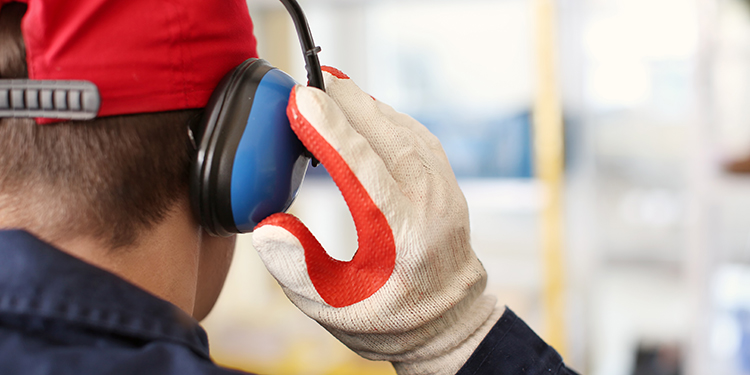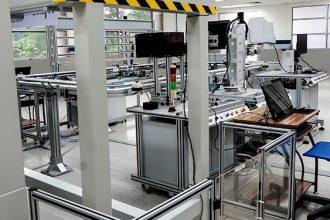How Ergonomic Equipment Can Minimize The Risk Of Hearing Loss

This post is part of the EASE Educational Series: Ergonomic Solutions from Head to Toe
While most operations managers and facility owners think of ergonomic assist systems and equipment in terms of their ability to reduce lost time injury costs by minimizing physical exertion, ambient conditions — such as excessive and continuous loud noise — also contribute to poor ergonomics and an increased risk of hearing loss. According to an investigation published by the American Medical Association’s Journal of Otolaryngology – Head & Neck Surgery, approximately 18% of adults aged 20-69 have speech-frequency hearing loss in both ears from among those who report five or more years of exposure to very loud noise at work. That’s more than three times the number of adults with speech-frequency hearing loss in both ears who report no occupational noise exposure (5.5%).
Prolonged exposure to loud noises can lead to hearing loss. That’s why the Occupational Safety & Health Administration (OSHA) has set a maximum allowable limit of 90 decibels of exposure for all workers for an 8-hour period, and the National Institute of Occupational Safety & Health (NIOSH) recommended exposure limit for occupational noise is 85 decibels for 8 hours.
Further, a noisy workplace can make communication between workers difficult, forcing them to shout at each other in order to be heard even at an arm’s length apart. In COVID times, with a minimum of 6 feet recommended for social distancing to prevent viral exposure, it can be nearly impossible to communicate verbally in such conditions. Excessive workplace noise can also cause workers to experience ringing or humming in their ears after they leave work, and pose an overall safety concern, particularly in environments with moving vehicles, such as forklifts. If an employee cannot hear a forklift’s approach, he or she might unwittingly step into the vehicle’s path.
The most common sources of loud noise in a material handling or manufacturing operation include that which is generated by fixed machinery or equipment as it runs; activity-related noise (loading and unloading of pallets, movement of forklifts and tuggers, warning alarms, overhead fans, dock doors opening and closing, conversations between colleagues, and more); and noise associated with material movement, such as carts being pushed, pulled or towed across floors.
There are a variety of ergonomic solutions that can be implemented to reduce noise in a facility. These include:
- Isolation barriers that obstruct or absorb sound waves generated by machinery or equipment. These solutions can be constructed of fiberglass or foam composites, vinyl, fabric, wood, metal or concrete.
- Implementation of different process measures to reduce activity-related noises. Quieter methods can sometimes be developed. Further, ensuring routine maintenance is performed on equipment can reduce noise associated with mechanisms that may be loose or out of alignment and rattling or vibrating excessively.
- Utilization of soft-tread wheels (instead of hard-tread wheels) or spring-loaded/shock-absorbing casters on carts, particularly in facilities with concrete floors that are no longer as smooth as they once were. The softer material and shock absorption reduce the overall level of noise produced as the cart travels across the floor. They also minimize vibrations generated during travel, which can cause the load to bounce on the cart, creating additional noise.
Further, mandatory hearing protection for workers — including soft foam ear plugs that fit into the ear canal and/or earmuffs (offered in over-the head, behind-the-neck or hard-hat mounted styles) that completely cover the entire ear and form an airtight seal — can be employed.
Looking for more ways to improve ergonomics in your manual material handling operation? Download the free publication, “Ergonomic Guidelines for Manual Material Handling,” published by the members of MHI’s Ergonomic Assist Systems & Equipment (EASE) Industry Group.



